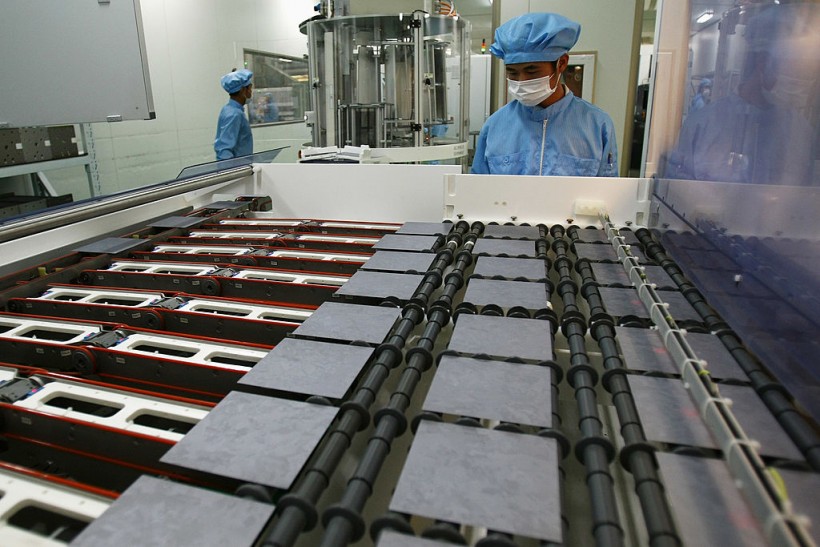Australia's research agency, the Commonwealth Scientific and Industrial Research Organisation (CSIRO), has reportedly gained a record-setting step for printable and portable solar cells.
The science agency's study set a new record for the efficiency of solar cells in converting sunlight to power.
The new efficiency rate can reportedly make organic-inorganic hybrid perovskite solar cells (PeSCs) a reality and commercially viable.
This is a welcome development, as PeSCs offer low-cost and low-energy manufacturing using solution-based industrial processes compared to current conventional inorganic solar cell technology.

(Photo: Feng Li/Getty Images)BAODING, CHINA—JUNE 24: On June 24, 2009, a worker controls the production line of the silicon chips used for making photoelectric board products at the plant of Tianwei Yingli Green Energy Resources Co., Ltd in Baoding, China.
Collaborating with scholars from four academic institutions, the University of Sydney, the University of Cambridge, Monash University, and the University of New South, the team of scientists reportedly claimed that their fully roll-to-roll printed cells, comprising all layers created through printing techniques, set a record for efficiency.
Through mass testing, the CSIRO reportedly managed to raise the efficiency rate of the solar cells from 1-2% to an astounding 11%.
Specifically, the researchers were able to attain an efficiency of 15.5% for a small-scale device and 11% for a larger device that was 50 cm squared.
Read Also: Abu Dhabi Achieves Solar Milestone with World's Largest Solar Power Plant
Solar Cell Mass Testing
Dr. Doojin Vak, the study's lead author, reports that they were able to create a system that quickly produces and tests more than 10,000 solar cells every day, simplifying the procedure for determining the optimal and most effective settings for each solar cell.
PeSCs can be mixed into inks and printed with commonly accessible industrial printers. Due to their flexibility and small weight, they have a wide range of possible uses and are portable.
A roll-to-roll method, like newspaper printing, is used to print the perovskite solar cells, enabling large-scale, continuous production.
The CSIRO-led team claims that the significant efficiency boost has made large-scale perovskite solar cell production economically feasible.
Because of their anticipated cheap prices and shorter energy payback period, roll-to-roll printed perovskite solar cells are an affordable and ecologically friendly renewable energy option.
Additionally, it significantly reduces manufacturing costs by using specialized carbon inks to replace the requirement for pricey metals like gold in manufacturing.
CSIRO is currently actively looking for industry partners to advance the development and commercialization of technology.
Australia's Solar-Powered Eye Treatment
Australian researchers also recently made headlines regarding solar power when researchers at the University of New South Wales (UNSW) in Sydney investigated the potential of inserting tiny solar panels into patients' eyes, which could transform how terminal eye illnesses are treated.
The UNSW study was headed by solar panel technology expert Dr. Udo Roemer. To get around injured photoreceptors, Roemer suggests using solar technology to turn light into energy, which will make it easier for the brain to process visual information.
Related Article: Solar Farm Spanning 3,500 Acres in Wisconsin, Now Online










